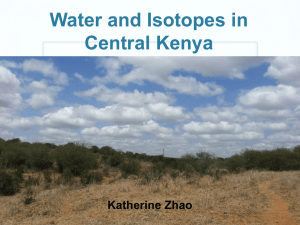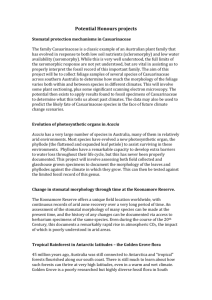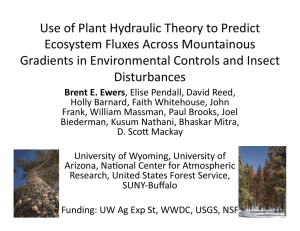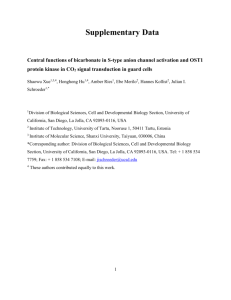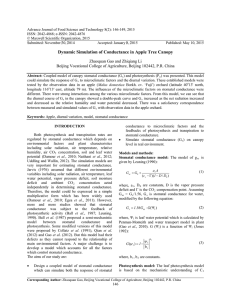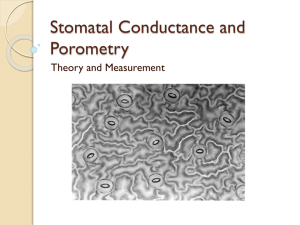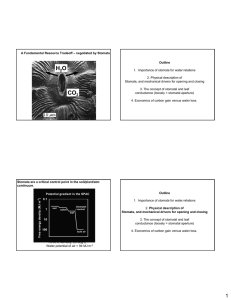gcb2790-sup-0001-Appendix
advertisement
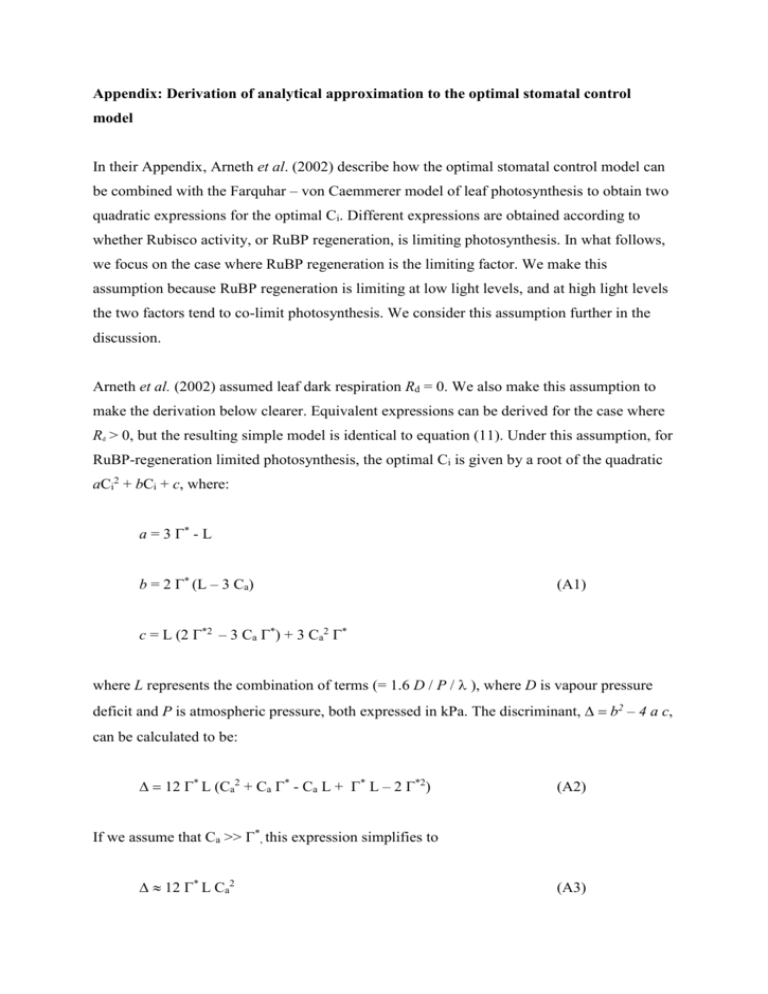
Appendix: Derivation of analytical approximation to the optimal stomatal control model In their Appendix, Arneth et al. (2002) describe how the optimal stomatal control model can be combined with the Farquhar – von Caemmerer model of leaf photosynthesis to obtain two quadratic expressions for the optimal Ci. Different expressions are obtained according to whether Rubisco activity, or RuBP regeneration, is limiting photosynthesis. In what follows, we focus on the case where RuBP regeneration is the limiting factor. We make this assumption because RuBP regeneration is limiting at low light levels, and at high light levels the two factors tend to co-limit photosynthesis. We consider this assumption further in the discussion. Arneth et al. (2002) assumed leaf dark respiration Rd = 0. We also make this assumption to make the derivation below clearer. Equivalent expressions can be derived for the case where Rd > 0, but the resulting simple model is identical to equation (11). Under this assumption, for RuBP-regeneration limited photosynthesis, the optimal Ci is given by a root of the quadratic aCi2 + bCi + c, where: a = 3 * - L b = 2 * (L – 3 Ca) (A1) c = L (2 *2 – 3 Ca *) + 3 Ca2 * where L represents the combination of terms (= 1.6 D / P / ), where D is vapour pressure deficit and P is atmospheric pressure, both expressed in kPa. The discriminant, b2 – 4 a c, can be calculated to be: 12 * L (Ca2 + Ca * - Ca L + * L – 2 *2) (A2) If we assume that Ca >> *, this expression simplifies to 12 * L Ca2 (A3) The solution to the quadratic is then Ci 3C a * * L C a 3 * L 3 * L (A4) The following expression is obtained for the Ci:Ca ratio: Ci Ca * 3 * 3 * L L Ca 3 L * (A5) The final term in the numerator is small compared to other terms, so we ignore it in the second approximation step: Ci 3 * 3 * L Ca 3 * L (A6) This expression can be simplified by completing the square in the denominator, giving: Ci 3 * Ca 3 * L (A7) Now, stomatal conductance and assimilation are related by: A C gs C a 1 i 1.6 C a (A8) Substituting in optimal Ci/Ca from equation (A7) and re-arranging, we obtain 3 * A g s 1.6 1 1.6 D C a (A9) This equation can then be re-written in a form that is analogous to the empirical models: g A * g s 1.6 1 1 D Ca where the model parameter g1 is given by the parameter combination (A10) 3 * P / 1.6 and has units of kPa0.5 The parameter g1 can readily be estimated by fitting equation (A10) to data, yielding in turn an estimate of . Finally, we note that the models of Ball et al. (1987) and Leuning (1995) are very similar in form to equation (A10), but also include an intercept term g0. The optimal stomatal conductance theory predicts that stomatal conductance should be zero when net photosynthesis is zero, so that the model should, strictly speaking, have a zero intercept, as in equation (A10). However, there may be cuticular conductance; also, there is accumulating evidence that stomatal conductance can be non-zero when photosynthesis is zero, including during the night (Seibt et al. 2007, Dawson et al. 2007, Zeppel et al. 2008). We therefore retain the intercept term, and suggest that it could be of interest to examine whether a significant intercept term coincides with positive night-time conductance values. The final form of the model is thus given by: g A * g s g 0 1.6 1 1 D Ca (A11)
